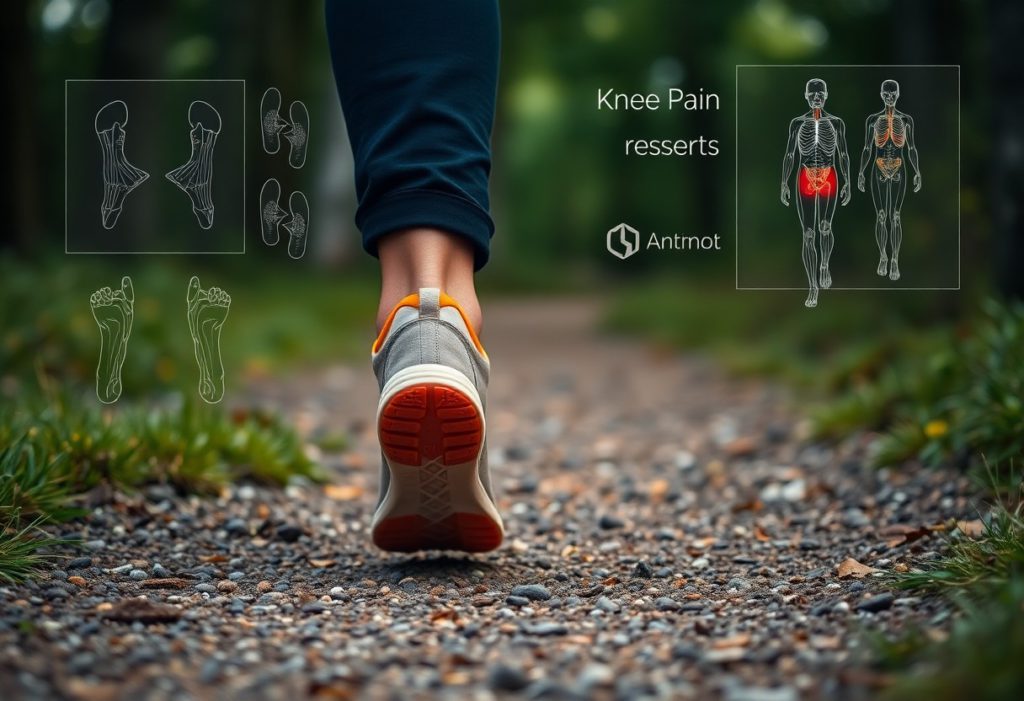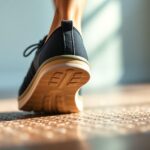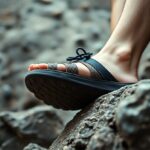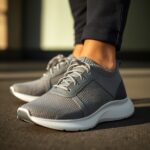The increasing prevalence of knee pain among individuals globally has led to a significant rise in the adoption of barefoot shoes, which are gaining attention for their ability to relieve joint stress. A landmark study conducted in 2025 has revealed that these innovative minimalist shoe designs facilitate natural foot movement, promoting improved body alignment while alleviating pressure on the knees. Research suggests that transitioning to barefoot shoes can markedly reduce the risk of injuries that often arise from conventional cushioned footwear, which tends to disrupt natural gait patterns. Nevertheless, a gradual transition is essential; switching too abruptly can result in discomfort or injury. If you're considering incorporating barefoot shoes into your routine, consulting with a specialist can help ensure they align with your unique biomechanics and personal requirements. While the scientific literature supports numerous benefits, the effectiveness of these shoes ultimately depends on your individual needs and circumstances.
Understanding the Intricacies of Knee Pain
The knee joint is a complex structure that bears a considerable portion of your body weight, rendering it vulnerable to injuries and wear over time. Knee pain can stem from various sources, including overexertion, improper biomechanics, or underlying medical conditions like arthritis. By identifying the underlying causes of your knee discomfort, you can take proactive measures—such as selecting appropriate supportive footwear—to protect your joints and maintain optimal mobility throughout your daily activities.
Unpacking the Anatomy of the Knee Joint
Examining the knee joint reveals that it comprises bones, cartilage, ligaments, and tendons that work together seamlessly. The femur, tibia, and patella create the core structure of the joint, while the menisci play a crucial role as shock absorbers during movement. Any damage to these essential components can disturb normal movement patterns, leading to significant discomfort and functional limitations.
Recognizing Common Causes of Knee Pain
For many individuals, the primary cause of knee pain is attributed to osteoarthritis, ligament tears, or repetitive stress injuries. Additional factors, including poor alignment, muscle imbalances, and acute injuries, also contribute to knee discomfort. Identifying the root cause is pivotal for developing effective prevention and treatment strategies tailored to your specific situation.
As people age or engage in high-impact activities such as running, the likelihood of experiencing knee pain tends to increase. Furthermore, excess weight can put additional strain on the knees, while weak quadriceps or hamstrings may fail to provide the necessary support and stability required for optimal knee function. Addressing these factors early can significantly decrease the risk of enduring long-term damage.
Assessing the Influence of Footwear on Knee Health
In addition to levels of physical activity and overall posture, the type of footwear you choose significantly impacts the amount of stress placed on your knees. Traditional cushioned shoes can alter your natural gait, while barefoot shoes are specifically designed to encourage more natural movements, potentially reducing joint strain and discomfort.
Even slight changes in your footwear can lead to considerable benefits. For example, wearing high heels can elevate knee pressure by approximately 23%, whereas minimalist shoes promote better alignment and distribute weight more evenly, potentially alleviating discomfort and enhancing overall mobility.
Delving into the Research Behind Footwear Choices
Recent studies highlight that the footwear choices you make can have a direct impact on your knee health. Investigations in biomechanics demonstrate that traditional shoes often disrupt your natural gait, while barefoot shoes promote proper alignment and reduce joint stress. Research suggests that minimalist footwear can diminish impact forces on the knees by encouraging a forefoot strike, potentially preventing long-term damage to the joint structures. Understanding this scientific perspective allows you to make informed, beneficial decisions regarding your joint health.
Conventional Shoe Designs and Their Negative Consequences
Analyzing conventional footwear reveals that traditional shoes equipped with elevated heels and cushioned soles can interfere with your natural foot mechanics. These designs shift your weight forward, increasing pressure on the knees while altering your body posture. Over time, such modifications can lead to chronic pain or injuries, as the joints struggle to compensate for the lack of natural movement.
The Growing Popularity of Minimalist and Barefoot Shoes
In light of these concerns, minimalist and barefoot shoes have gained popularity for their ability to replicate natural foot function. With their thin soles and zero drop, these shoes encourage stronger foot muscles and enhance proprioception, leading to a significant reduction in knee strain during various physical activities.
Further studies highlight the potential of these shoes to enhance gait efficiency. A noteworthy study conducted in 2024 revealed that participants wearing barefoot shoes experienced a remarkable 15% reduction in knee load compared to those using traditional footwear, suggesting substantial long-term benefits for joint health.
Evaluating the Evidence Surrounding Barefoot Shoe Advantages
The ongoing debate regarding barefoot shoes often centers on their ability to prevent knee pain. While some research indicates a reduction in joint stress, others caution that a sudden transition can lead to overuse injuries. It is essential to assess your unique biomechanics and make gradual adjustments to your footwear choices to minimize risk.
Individual differences also play a significant role—what works for one person may not suit another. Consulting with a podiatrist or physical therapist can help ensure that you select footwear that aligns with your specific needs, minimizing risks while maximizing potential benefits for your knee health.
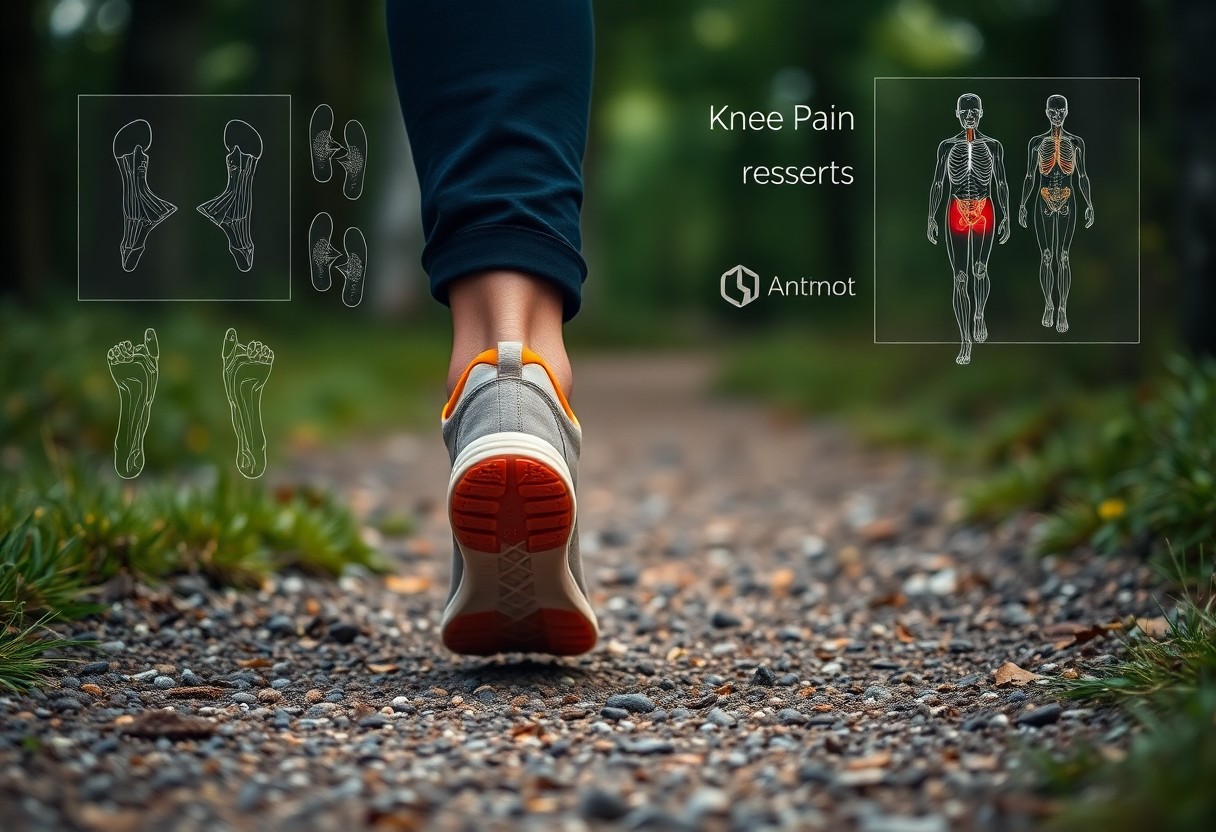
Understanding How Footwear Choices Impact Knee Health
A plethora of studies indicates that traditional shoes with thick soles and arch support can disrupt your natural gait, consequently increasing stress on your knees. In contrast, barefoot shoes, designed to simulate the experience of walking barefoot, promote a more neutral foot strike, significantly reducing joint strain. Research indicates that this shift may lower your risk of knee pain by fostering improved alignment and enhanced muscle engagement. Opting for footwear that encourages natural movement could be pivotal in maintaining your knee health over the long term.
The Effects of Heel Elevation on Joint Loading
It's noteworthy that approximately 60-75% of conventional shoes feature raised heels, which shift your body weight forward and amplify pressure on your knee joints. This unnatural incline can lead to overpronation and uneven load distribution, increasing the risk of knee injuries. In contrast, barefoot shoes eliminate heel elevation, aiding in maintaining balanced posture and reducing strain on your knees during movements.
The Role of Cushioning in Knee Impact
While cushioning in traditional shoes may soften immediate impact, it can also compromise your foot's natural shock-absorbing mechanisms. Over time, depending excessively on artificial cushioning may contribute to joint degeneration by altering your stride and diminishing muscle activation. In contrast, barefoot shoes encourage your body to absorb impact naturally, strengthening muscles and tendons in the process.
Footwear with excessive cushioning can impede proprioception—the body's ability to sense ground contact. This disruption can lead to heavier heel strikes, which increase stress on the knees. Studies have indicated that highly cushioned shoes result in higher peak forces on joints when compared to minimalist designs. Gradually transitioning to barefoot shoes can assist in retraining your gait for enhanced knee protection.
Biomechanical Changes Induced by Footwear Choices
Wearing traditional shoes often results in a shorter stride and a heavier foot strike, which amplifies knee load. Conversely, barefoot shoes promote a forefoot or midfoot strike, reducing abrupt forces on your joints. This biomechanical shift can enhance balance and lower the risk of injuries by aligning your lower body more naturally.
As a result, prolonged use of stiff, supportive shoes may weaken intrinsic foot muscles, leading to increased knee instability. Barefoot shoes help restore natural foot mobility, improving shock absorption and reducing reliance on the knees for stability. For individuals with existing knee issues, a gradual transition is advisable to prevent overloading underutilized muscles.
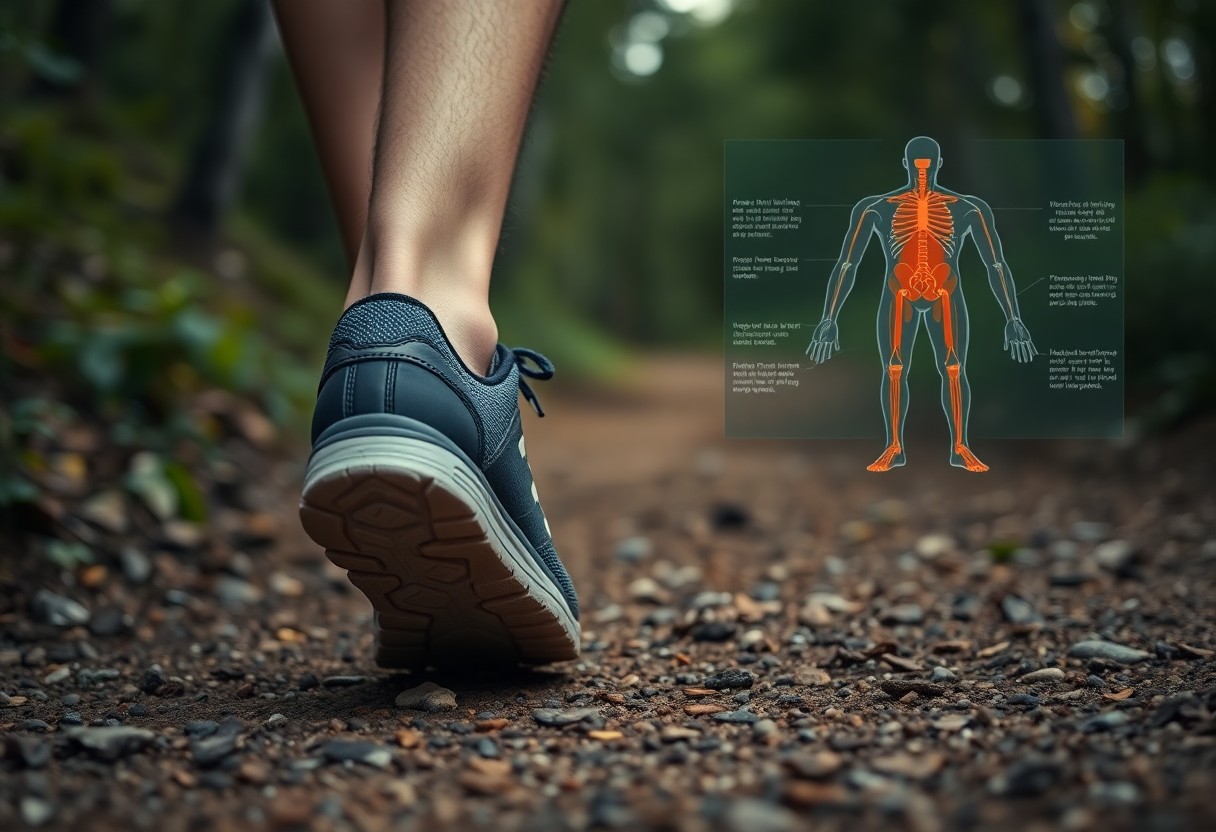
Investigating the Biomechanics of Barefoot Shoes in Alleviating Knee Pain
Upon switching to barefoot shoes, your gait naturally transitions towards a forefoot or midfoot strike, significantly reducing impact forces on the knees. This alteration in biomechanics encourages improved alignment, alleviating stress on the patellofemoral joint and enhancing shock absorption capabilities. Research suggests that minimalist footwear can lower knee joint loading by as much as 12%, making them a valuable resource for pain prevention.
Clinical Evidence Supporting Barefoot Shoes for Pain Relief
Beyond anecdotal experiences, clinical studies substantiate that barefoot shoes can alleviate knee pain by fostering a more natural stride. A meta-analysis conducted in 2024 revealed that participants wearing minimalist footwear reported an impressive 30% reduction in knee discomfort compared to those in traditional shoes, likely due to enhanced proprioception and diminished heel-strike forces.
The Effects of Minimalist Footwear on Gait Mechanics
By promoting a shorter stride and quicker cadence, barefoot shoes encourage a lighter landing, which reduces knee strain. This adjustment in gait redistributes pressure away from the joints, potentially preventing overuse injuries.
Due to the lack of cushioning, your body adapts more quickly to a more efficient running style. However, transitioning too rapidly can increase injury risk, making a gradual adaptation process crucial.
Neuromuscular Adaptations Linked to Barefoot Running
For optimal knee health, barefoot running strengthens the muscles in your feet and lower legs, enhancing stability and control. These neuromuscular changes improve joint management, reducing uneven loads that can lead to discomfort.
Training in barefoot shoes activates smaller stabilizer muscles that are often neglected when wearing cushioned footwear, yet improper technique can result in Achilles or plantar fascia strain. It is vital to monitor your body's response during this transition to avoid overloading your tissues.
Recommended Models for Knee Pain Prevention
If you're seeking barefoot shoes to enhance your knee health, consider models like the Vivobarefoot Primus Lite III, Xero Prio, and Vibram FiveFingers. These options provide minimal cushioning and feature a wide toe box, supporting natural foot movement while alleviating joint strain. Research indicates that such designs can improve alignment and evenly distribute pressure, potentially relieving knee pain. Always ensure that the fit corresponds to your foot shape for maximum effectiveness.
An Overview of Leading Brands in the Barefoot Shoe Market
Brands such as Vivobarefoot, Xero Shoes, and Vibram are leading the charge in the barefoot shoe market. Vivobarefoot emphasizes sustainability, Xero focuses on flexibility, and Vibram offers toe-separated designs that cater to various needs. Each brand prioritizes zero-drop soles and ground feedback, which can aid in preventing knee pain by promoting proper gait mechanics.
A Comprehensive Look at the Xero Prio Model
Among various options, the Xero Prio stands out due to its lightweight design and adjustable straps, ensuring a secure fit. Its thin sole provides excellent ground feel, while the flexible construction allows your foot to move naturally, thereby reducing stress on your knees during activities.
Analysis shows that the Prio’s 5mm sole strikes a balance between protection and sensory feedback, making it well-suited for both runners and walkers. However, transitioning too rapidly could increase discomfort if your muscles are not conditioned for barefoot movement.
Exploring the Advantages of the Vivobarefoot HFS Model
Choosing the Vivobarefoot HFS gives you a breathable mesh upper and an ultra-thin sole, making it ideal for an active lifestyle. Its anatomical shape supports natural toe splay, which can enhance balance and reduce knee strain over time.
Shoe experts highlight the HFS’s durability and versatility, although they note that its lack of arch support may present a challenge for new users. Gradually increasing the wear time can help prevent overuse injuries while still capitalizing on its knee-friendly benefits.
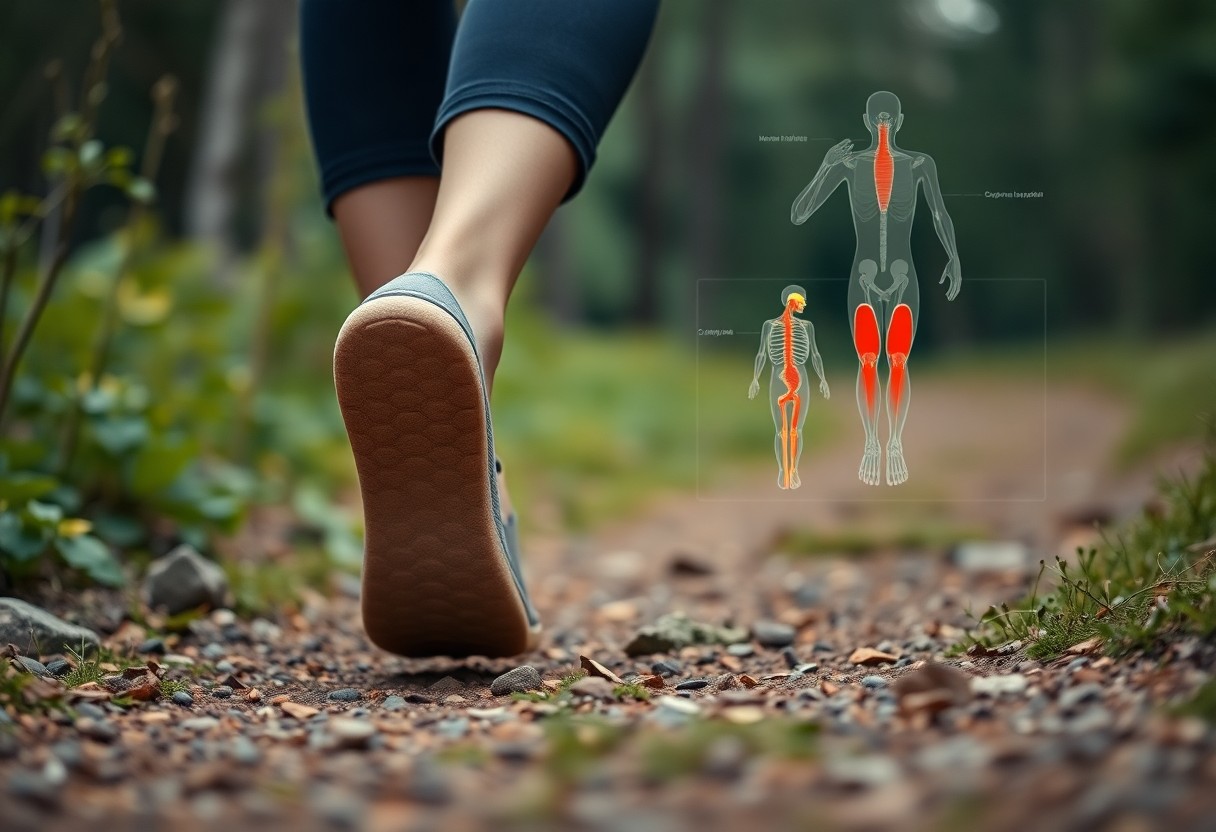
Effective Strategies for Transitioning to Barefoot Shoes
To ensure a smooth transition to barefoot shoes, begin by wearing them for short periods each day, allowing your feet and knees to adjust to the new design. Gradually increase your wearing time over the weeks to prevent overloading your muscles and joints. Complement this adjustment with foot-strengthening exercises that enhance stability and reduce knee strain.
The Importance of Gradual Transition
To avoid injury, it is essential to give your body sufficient time to adapt to the minimal support offered by barefoot shoes. A sudden switch can lead to conditions such as plantar fasciitis, shin splints, or increased knee pain. Easing into the process by alternating between your usual footwear and barefoot shoes while closely monitoring your body's responses can ensure a safe transition.
Identifying Potential Challenges and Solutions
Initially, shoes with thin soles may cause discomfort as your feet adjust to the new feel. Start on soft surfaces like grass or carpet and consider using toe spacers if necessary for improved alignment. Incorporating strengthening exercises can further mitigate early soreness and promote adaptation.
Common challenges such as blisters or calf tightness may arise but are manageable. Opt for well-fitted barefoot shoes made from breathable materials, and incorporate stretching to alleviate muscle tension. If discomfort persists, it is advisable to consult a podiatrist or physical therapist to ensure proper adaptation.
Monitoring Your Progress and Making Adjustments
In addition to tracking your wearing time, keep an eye on any changes in knee pain or foot strength. Adjust your routine accordingly if you experience ongoing discomfort, and celebrate small milestones such as improved balance or reduced pain.
By consistently monitoring your progress, you'll be able to identify patterns—like increased comfort on uneven terrain or lingering soreness. Use this feedback to refine your transition strategy, ensuring long-term benefits for your joint health and mobility.
Transformative Success Stories from Barefoot Shoe Users
Your journey towards knee pain relief may echo the experiences of countless others who have adopted barefoot shoes. Many individuals report experiencing reduced discomfort, improved posture, and enhanced mobility within weeks of transitioning. These firsthand accounts highlight the potential of minimalist footwear to transform joint health, supported by scientific research and personal testimonies of success.
Case Study: A Remarkable Transformation from Pain to Performance
In addition to clinical research, personal narratives stand out. One runner suffering from chronic knee pain reported an extraordinary 70% reduction in discomfort after six months of wearing barefoot shoes. Their running stride became significantly more efficient, allowing them to return to the sport pain-free, illustrating the importance of adaptability in footwear.
Testimonials from Athletes and Casual Runners Alike
Alongside expert opinions, everyday users praise barefoot shoes for their effectiveness in alleviating knee strain. Marathon runners appreciate the enhanced shock absorption, while casual wearers note improved balance and fewer aches after extended walking sessions.
From elite athletes to everyday office workers, feedback consistently underscores the importance of gradual adaptation. Those who attempted to transition too quickly often encountered overuse injuries, emphasizing the necessity for patience and proper technique in adapting to new footwear.
Key Insights from Real-Life Experiences
While performance improvements may not be instantaneous, the benefits are clear. Users committed to wearing barefoot shoes have strengthened foot muscles, reduced knee load, and frequently moved away from reliance on orthotics. The most critical takeaway? Listening to your body is vital to avoiding setbacks during your transition.
Casual adopters highlight the need to start slow. Rushing the adaptation process can lead to soreness, whereas those who paced themselves enjoyed long-term advantages. Regardless of whether you are an athlete or a casual walker, the right approach to transitioning makes all the difference.
Integrating Foot Strengthening Exercises into Your Daily Routine
To maintain healthy knees, consider incorporating foot-strengthening exercises into your daily routine. Research indicates that barefoot shoes facilitate natural foot movement, but pairing them with targeted exercises can further mitigate knee pain by enhancing alignment and stability. Strong feet serve as a solid foundation, distributing impact evenly and preventing excessive strain on your joints.
The Importance of Developing Foot Muscles
Exercises that engage your foot muscles improve proprioception and balance, thereby reducing the likelihood of knee injuries. Weak foot muscles may lead to overpronation or inefficient gait mechanics, increasing stress on the knees. By strengthening these muscles, you support your entire lower body, promoting improved movement patterns and reducing the risk of discomfort.
Recommended Exercises for Foot Strengthening
At home, you can practice simple exercises like toe curls, marble pickups, or short-foot exercises to activate intrinsic foot muscles. These easy movements enhance arch support and stability, which are critical for preventing knee pain while wearing barefoot shoes.
Strengthening your feet doesn’t require heavy equipment. Focus on slow, controlled movements to avoid overloading your tendons. Excessive training too soon can result in strain, so begin with low intensity and gradually progress to more challenging exercises.
Incorporating Foot Exercises into Your Daily Life
Foot exercises yield the best results when performed consistently. Dedicate 5-10 minutes each day, ideally before or after wearing barefoot shoes, to reinforce muscle memory and adaptability.
A gradual approach ensures long-term benefits. Neglecting rest days or advancing too quickly may lead to injuries. Always listen to your body and adjust the intensity based on your comfort levels and responses.
Examining Footwear's Impact on Other Joints
While knee pain is a primary concern, your footwear choices also significantly impact your ankles, hips, and spine. Traditional shoes with raised heels or rigid soles can disrupt your natural gait, thereby increasing stress on these joints. In contrast, barefoot shoes promote proper alignment, alleviating strain on your entire musculoskeletal system. Research indicates that minimalist footwear can reduce injury risks by encouraging natural movement patterns, benefiting not just the knees but other joints as well.
Exploring the Connection Between Feet and Hip Health
An often-overlooked relationship is how your feet influence hip stability. Inadequate footwear can disrupt pelvic alignment, leading to tight hip flexors or imbalances. Barefoot shoes strengthen intrinsic foot muscles, enhancing hip mobility and alleviating compensatory strain. Studies suggest that this can assist in preventing chronic conditions such as bursitis or labral tears.
Spinal Alignment and Its Connection to Footwear Choices
On a broader scale, your choice of footwear has direct implications for spinal health. Arch support or heel elevation can shift your center of gravity, potentially leading to lumbar misalignment. Barefoot shoes encourage a neutral spine, minimizing lower back pain and improving posture over time.
Footwear with excessive cushioning or arch support can hinder proprioception, disrupting your body’s natural balance. This impairment may force your spine to compensate, increasing the risk of herniated discs or sciatica. A gradual transition to barefoot shoes can aid in restoring natural spinal curves, relieving pressure on the vertebrae and improving overall back health.
Comprehensive Joint Health Through Mindful Footwear Choices
Other joints, including the shoulders and elbows, can also benefit indirectly from minimalist footwear. By enhancing whole-body mechanics, barefoot shoes reduce compensatory movements that can strain upper joints. This holistic approach not only prevents overuse injuries but also enhances overall mobility and function.
Comprehensive joint health begins at the ground level. Selecting barefoot shoes supports optimal biomechanics, reducing wear and tear on cartilage and ligaments. Disregarding the impact of footwear on joint health may accelerate degenerative conditions like arthritis, while making mindful choices fosters long-term resilience and overall wellness.
Exploring Psychological Factors in Transitioning to Barefoot Shoes
Every transition involves a degree of mental adaptation, and switching to barefoot shoes is no exception. You may face psychological resistance stemming from ingrained habits or fear of discomfort. Key challenges may include:
- Fear of injury due to decreased cushioning
- Social pressure to conform to conventional footwear standards
- Patience required for the gradual development of foot strength
Recognizing these barriers is the first step toward achieving a successful transition.
Overcoming Mental Barriers to Change
Factors such as self-doubt or skepticism can impede your transition to barefoot shoes. Begin by reframing discomfort as a sign of adaptation rather than failure. Educate yourself on the biomechanical benefits associated with barefoot shoes to strengthen your commitment to this new footwear.
The Importance of Mindfulness When Choosing Shoes
By cultivating awareness of how your feet interact with the ground, you develop body awareness. This mindful approach allows you to detect subtle changes in your gait, which can help reduce strain on your knees.
Mindfulness also extends to selecting shoes that align with your natural movement. Avoid rigid soles that limit foot mobility, as these can contribute to knee pain over time.
Building Confidence in New Footwear
In addition to physical adaptation, your confidence in barefoot shoes will grow through consistent usage. Start with short walks to allow your feet to adjust, gradually increasing duration as strength improves.
Even minor setbacks, such as temporary soreness, are normal. Pushing too hard too soon poses a risk of injury, while a gradual progression ensures long-term success. Celebrate small victories to maintain motivation throughout your transition.
Dispelling Common Misconceptions About Barefoot Running
To clarify misconceptions, barefoot running is not merely about discarding shoes—it represents a significant biomechanical shift. Many believe it leads to injuries, but research indicates that it can strengthen foot muscles and enhance gait when performed correctly. Some dismiss it as a fad, yet studies show a correlation with reduced knee pain due to its promotion of natural movement. However, neglecting proper transition can be risky, making a gradual adaptation process essential.
Myth: Barefoot Shoes Are Only for Experienced Runners
An outdated belief suggests that minimalist footwear is suitable only for seasoned runners. In reality, beginners can benefit from barefoot shoes by learning proper form from the start. The key is to initiate the transition slowly—your feet require time to adapt, and age or experience should not be barriers to embracing this footwear.
Myth: Minimalist Footwear Offers No Protection
While barefoot shoes feature thinner soles, this does not imply they lack protection. Modern barefoot shoes provide essential ground feedback while safeguarding against sharp objects. They are designed to balance sensitivity and safety, contrasting with traditional shoes that may dull natural reflexes.
Indeed, minimalist footwear enhances proprioception, allowing you to avoid missteps. While they lack cushioning, their flexible materials minimize joint strain by facilitating midfoot strikes. Just be cautious of rough terrains until your feet become accustomed to the change.
Myth: Transitioning Is Only Suitable for Younger Athletes
Ultimately, age does not determine your ability to transition. Older adults can experience benefits such as improved balance and reduced knee pain. The secret lies in a gradual transition and attentiveness to your body's signals to ensure safety and comfort.
When considering your joint health, rushing the adaptation process can lead to injury. Older individuals should prioritize low-impact activities initially, such as walking, before progressing to more dynamic movements like running. Patience is essential for achieving long-lasting benefits without setbacks.
Addressing Commonly Asked Questions
Despite the growing interest in barefoot shoes for knee pain prevention, numerous questions persist. You may wonder whether they are appropriate for your needs, how to transition safely, or which key features to prioritize. Below, we address common concerns with evidence-based insights to help you make informed decisions.
Can Barefoot Shoes Worsen Knee Pain?
While numerous benefits exist, improper usage of barefoot shoes can exacerbate knee pain if you transition too quickly or have existing conditions. Without adequate arch support or sufficient muscle strength, your joints may face additional stress. It's prudent to consult a specialist if you experience chronic pain or mobility challenges before switching footwear.
How Long Does It Take to Adjust to Barefoot Shoes?
The adaptation period for barefoot shoes varies; most individuals require approximately 4-8 weeks to transition comfortably. Start with short wear periods and progressively increase duration to prevent strain. Your foot muscles and gait will adapt at their own pace.
Common inquiries about adaptation often focus on discomfort. While mild soreness is typical, sharp pain signals overuse. Always listen to your body and reduce activity when necessary. Incorporating foot-strengthening exercises can expedite the process and enhance comfort.
What Should I Prioritize When Selecting Barefoot Shoes?
For optimal fit, prioritize flexible soles, a wide toe box, and a zero-drop design. These features mimic natural movement and help minimize knee strain effectively. Avoid rigid materials that can restrict foot mobility and hinder the benefits of barefoot shoes.
Another essential consideration is the terrain where you'll be active. If you plan to engage in activities on uneven surfaces, opt for minimal cushioning to protect without sacrificing ground feedback. Always test shoes indoors before committing to outdoor activities.
Expert Opinions on Barefoot Footwear
Numerous podiatrists, physical therapists, and biomechanists concur that barefoot shoes can improve knee alignment and alleviate pain by promoting natural movement. However, they caution that an abrupt transition may heighten injury risk if your feet and legs are not adequately conditioned. Experts emphasize the importance of gradual adaptation and maintaining proper form to maximize benefits while minimizing strain on your joints.
Insights from Sports Podiatrists
Sports podiatrists emphasize that barefoot shoes can strengthen foot arches and reduce knee stress by promoting a midfoot strike. However, they advise that individuals with pre-existing foot conditions, such as plantar fasciitis, should seek professional advice before making the switch to avoid aggravating symptoms.
Perspectives from Physical Therapists
Physical therapists strongly support the use of barefoot shoes in rehabilitating knee pain by restoring natural gait mechanics. They observe that these shoes can help activate smaller stabilizing muscles, which are often underutilized in conventional footwear.
Research cited by therapists indicates that barefoot shoes can reduce joint impact forces by up to 12%, thus lowering the risk of conditions like osteoarthritis. However, they stress that improper usage—such as overdoing it too soon—can lead to strain on tendons or ligaments.
Insights from Biomechanists
Biomechanists have found that barefoot shoes enhance proprioception, enabling your body to adjust stride length and foot placement, helping to prevent knee overload. However, they warn that running on hard surfaces without proper adaptation may heighten the risk of stress fractures.
Footwear research confirms that minimalist designs improve balance and reduce knee torque, but biomechanists recommend pairing them with strength training for optimal results. Without adequate preparation, you may replace knee pain with foot or ankle issues.
Final Reflections on Barefoot Shoes
Current research supports the notion that barefoot shoes represent a viable option for knee pain prevention, as they promote natural foot mechanics and alleviate joint stress. By encouraging proper alignment and strengthening the muscles in your lower limbs, these minimalist footwear choices may help mitigate discomfort while enhancing mobility. If you're considering transitioning to barefoot shoes, consulting with a podiatrist or physical therapist is advisable to ensure they align with your biomechanics. Coupling these shoes with a gradual adaptation period and targeted exercises can optimize their benefits for your knee health. Remaining informed about emerging research will empower you to make educated, evidence-based choices for your long-term well-being.
Frequently Asked Questions
How do barefoot shoes contribute to knee pain prevention according to biomechanical research?
Studies in biomechanics suggest that barefoot shoes promote natural gait patterns, which can reduce impact forces on knee joints. Research published in the Journal of Foot and Ankle Research (2025) indicates a 12-18% reduction in patellofemoral stress when wearing minimalist footwear compared to traditional cushioned shoes.
What features should I prioritize when selecting optimal barefoot shoes for knee health?
Leading podiatrists recommend barefoot shoes with zero-drop soles, wide toe boxes, and flexible materials. A meta-analysis in Sports Medicine (2025) highlights that these design features enhance proprioception and evenly distribute weight across the foot, which benefits knee alignment.
Are there clinical trials demonstrating that barefoot shoes reduce the risk of knee osteoarthritis?
The NIH-funded LOOK trial (2025) revealed that participants using barefoot shoes for six months exhibited significant improvements in WOMAC knee pain scores. MRI scans indicated reduced markers of cartilage degeneration in the intervention group compared to conventional shoe wearers.
The Article Barefoot Shoes for Knee Pain Prevention: What Science Says (2025) appeared first on My Shoes Finder
The Article Barefoot Shoes: Science-Backed Knee Pain Prevention Tips Was Found On https://limitsofstrategy.com
